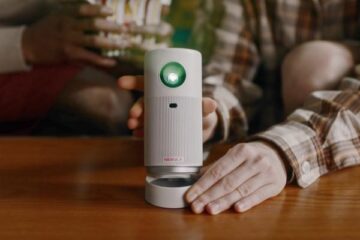As the saying goes, “The roof is the crowning glory of a home.” And in today’s modern world, that statement couldn’t be more accurate. The traditional notion of a roof simply serving as a protective cover has evolved into a crucial element of a building’s overall design and aesthetic.
From eye-catching metal shingles to environmentally friendly living roofs, the options are endless. But with so many options, it can be overwhelming to determine which one is the best fit for your home.
In this article, we will talk about the latest trend for modern roof design. Read on.
Sustainable Roofing Materials
Sustainable roofing materials have gained popularity in the construction industry. This is with a growing importance on eco-friendly practices. Here are some of those.
Solar Tiles
Solar tiles are a revolutionary advancement in sustainable roofing materials. Unlike traditional solar panels that sit atop the roof, solar tiles are integrated into the roof’s design. It provides a seamless and aesthetically pleasing look.
Made from durable and lightweight materials, solar tiles harness the power of the sun to generate electricity. This reduces reliance on conventional energy sources and lowers utility bills.
Green Roofs
Green roofs are covered with vegetation and soil, transforming traditional roofing into eco-friendly spaces. It’s also known as living roofs. These roofs offer many benefits, including:
- improved insulation
- reduced urban heat islands
- enhanced air quality
Green roofs can be designed with a variety of plants, from grasses and flowers to shrubs and small trees. This creates beautiful and biodiverse environments.
Cool Roofs
Cool roofs are designed to reflect more sunlight and absorb less heat than standard roofs. This is achieved through highly reflective materials such as:
- white coatings
- reflective granules
By keeping the building cooler, cool roofs reduce the need for air conditioning. It leads to significant energy savings and a smaller carbon footprint.
Advanced Roofing Technologies
Advanced roofing technologies have transformed the way we view modern roof design. Here are some modern roofing trends.
Smart Roofs
Smart roof technology uses sensors and automation to monitor and control various aspects of the roof’s performance. For example, sensors can:
- detect leaks
- measure temperature
- assess structural integrity
This provides real-time data to homeowners and maintenance teams. Automated systems can adjust features like ventilation and shading based on weather conditions. It optimizes energy efficiency and comfort.
Self-Healing Materials
Self-healing materials are a groundbreaking innovation in roof design. It addresses the issue of wear and tear over time. These materials contain microcapsules filled with a healing agent that is released when cracks or damage occur.
The healing agent fills the gaps and hardens. It restores the material’s integrity and prolongs the roof’s lifespan.
Photovoltaic (PV) Integration
In addition to solar tiles, photovoltaic (PV) integration involves embedding solar cells directly into roofing materials such as:
- shingles
- metal panels
This approach allows for greater flexibility in design. It also can be used on both residential and commercial buildings. PV-integrated roofs generate clean energy.
It also contributes to a sleek and modern aesthetic. Visit this location to learn more about cutting-edge design with solar for the roof.
Creative Design Techniques
Contemporary architecture for roofs has been changing in recent years. Here are some new designs.
Curved Roofs
Curved roofs are a striking architectural feature that adds a sense of elegance and sophistication to modern homes. Advances in materials and construction techniques have made it possible to create smooth, flowing curves that were once challenging to achieve. Curved roofs can be constructed using a variety of materials, including:
- metal
- wood
- concrete
- plastics
This offers endless design possibilities.
Floating Roofs
Floating roofs create the illusion of a roof that hovers above the structure. It’s often achieved through clever cantilevering and support systems.
This design technique can add a sense of lightness and openness to the building. This is while also providing practical benefits such as extended outdoor living spaces and shaded areas.
Geometric Patterns
Incorporating geometric patterns into roof design can enhance the visual appeal and uniqueness of a home. Techniques can be used to create eye-catching patterns that complement the overall architectural style. These are like interlocking:
- triangles
- hexagons
- other shapes
Enhanced Performance and Durability
Enhanced performance and durability for roof construction can be beneficial for homeowners. Here are some latest trends.
Composite Materials
Composite materials are made from a combination of different substances. It offers:
- superior strength
- durability
- resistance to environmental factors
For example, fiber-reinforced polymers (FRPs) are lightweight yet strong, making them ideal for modern roof designs. These materials can withstand harsh weather conditions. It reduces the need for frequent maintenance and repairs.
Impact-Resistant Shingles
Impact-resistant shingles are designed to withstand extreme weather events such as hailstorms and high winds. Made from reinforced materials like:
- asphalt
- metal
- polymer
These shingles provide enhanced protection and longevity. They are an excellent choice for homeowners looking to safeguard their investments. This is while maintaining an attractive roof.
Fire-Resistant Materials
Fire-resistant roofing materials are essential in areas prone to wildfires or extreme heat. Some materials offer excellent fire resistance. These are like:
- metal
- clay tiles
- certain synthetic options
This reduces the risk of roof damage and improves overall safety. These materials are also available in various styles and colors. It allows homeowners to achieve both protection and aesthetic appeal.
Integration with Modern Home Automation
Architectural innovation for roofs has made its mark, especially in using automation. Here are some examples.
Energy Management Systems
Modern roof designs can be integrated with home energy management systems to optimize energy usage and reduce costs. For example, solar roofs can be connected to smart meters and energy storage systems. It allows homeowners to monitor and control their energy consumption.
Climate Control
Advanced climate control systems can be incorporated into roof designs to enhance comfort and energy efficiency. For instance, automated vents and skylights can regulate temperature and airflow, adapting to changing weather conditions. These systems can be controlled remotely via:
- smartphones
- laptops
- home automation hubs
This provides convenience and flexibility.
Security Features
Innovative roof designs can also include security features such as:
- motion sensors
- cameras
- alarm systems
These elements can be discreetly integrated into the roof structure. It provides enhanced security without compromising aesthetics. Homeowners can monitor and manage these systems through smart home platforms.
Use These Modern Roof Design Today
In conclusion, innovative materials and techniques have truly transformed the realm of modern roof design. It offers endless possibilities for stunning and functional structures.
Don’t be afraid to think outside the box and incorporate these methods into your next project. Let’s elevate roof design to new heights!
If you want to read more articles, The Ultimate Guide to Understanding acúmen visit our blog.




